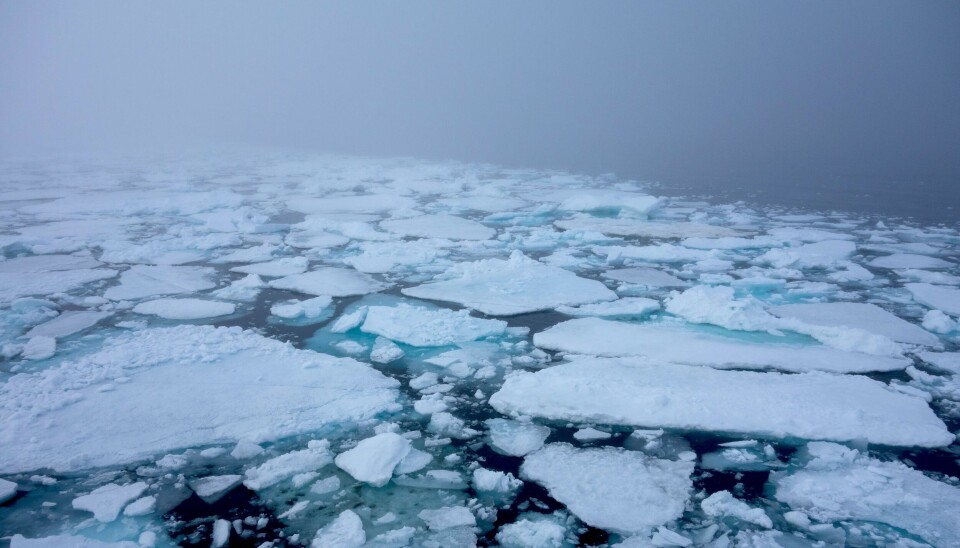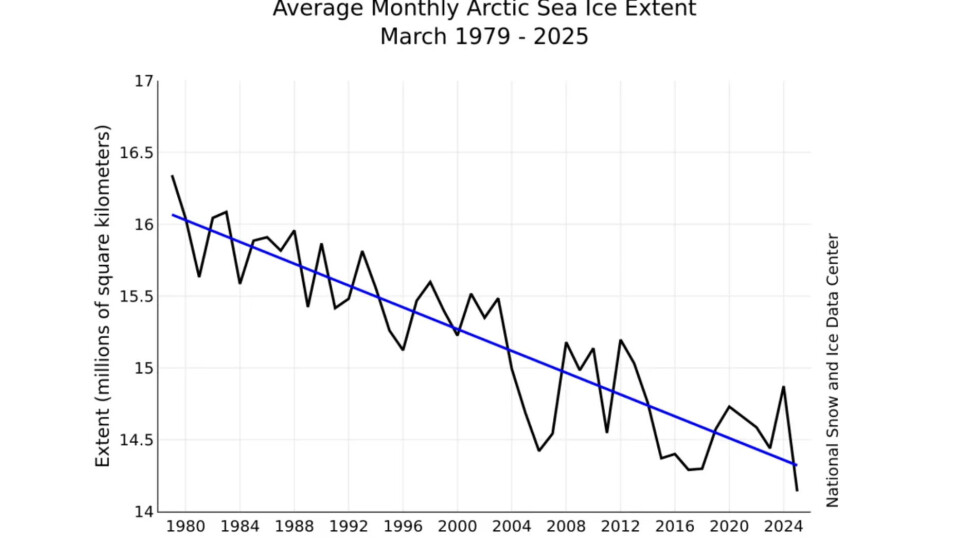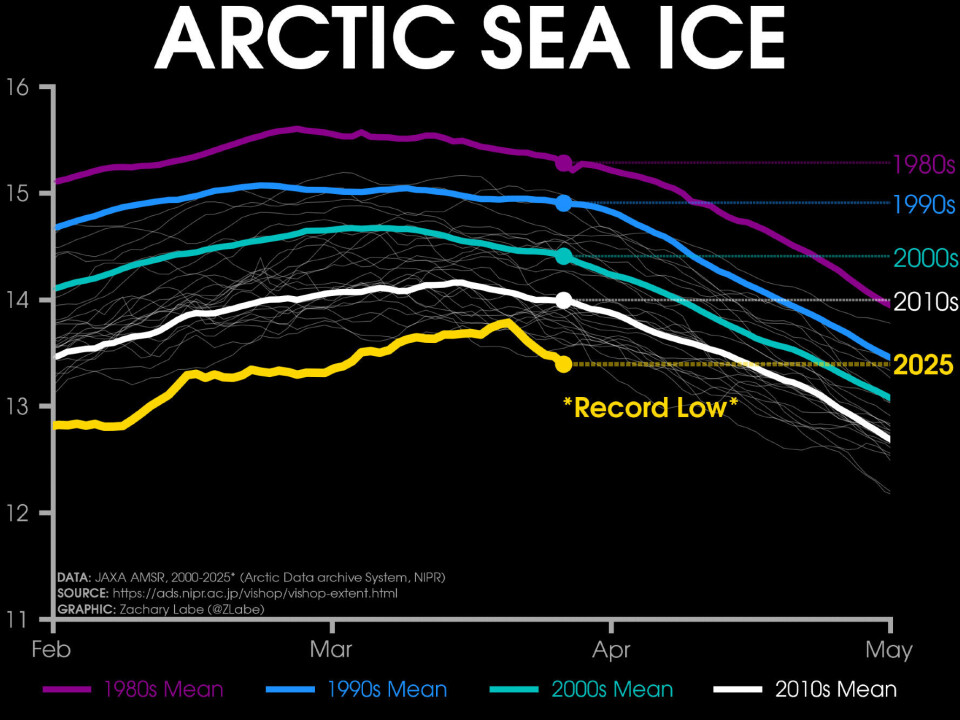
Sea ice reaches this year's maximum extent and it's the lowest on record
Spring in the Arctic arrives with the lowest sea ice extent since satellite observations began 47 years ago.
Arctic sea ice extent in March averaged 14.14 million square kilometres, the lowest in the 47-year satellite record and 150,000 square kilometres below the previous record low for March in 2017, the National Snow and Ice Data Center (NSIDC) reported.

The new record comes after the monthly Arctic sea ice extent also reached a record low in February, according to the Copernicus Climate Change Service.
The Arctic reaches its maximum sea ice in March each year and then starts melting through spring and summer.
The NSIDC emphasises that after reaching its maximum extent on 22 March, ice retreat was most pronounced in the Sea of Okhotsk (in Russia) and the Barents Sea. The rate of ice loss from 22 March to 1 April was 29,500 square kilometres per day.
The Norwegian Meteorological Institute (MET) also reports on the significant loss of sea ice extent in the Arctic.

According to the institute, sea ice reached its maximum extent of 14.43 million square kilometres on 20 March. This is 1 million square kilometres less than normal:
“This is the lowest winter maximum we have ever measured after the winter season, but only slightly lower than the previous record which was in 2018,” Thomas Lavergne, a climate scientist at MET said.
The 1 million kilometre area is roughly the size of Norway, Sweden and Finland combined, MET points out.














